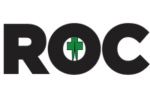Western New York community needs to address the ‘invisible poor’
Larry Bierl tragically froze to death in Amherst recently. It could just have easily happened in rural Western New York.
Coverage of Larry’s death, and the related issue of how those experiencing homelessness were dealing with the extreme cold, included repeated media announcements of Code Blue sites, focused solely on urban conditions and opportunities.
This is because rural poverty is called the “invisible poverty” and recent news coverage proves the point.
As executive director of the Rural Outreach Center, I am making a public plea that we need to make the plight of the “invisible poor” visible, and then to make the well-being of this important part of our community mosaic matter.
The Rural Outreach Center (ROC), located south of East Aurora, serves much of the rural population in southern Western New York. It, too, is a Code Blue site, providing overnight warming and sleeping accommodations to homeless persons from Yorkshire, Springville, Hamburg, West Seneca and parts in between.
The majority of poverty in Erie County is outside the urban core. Within the zip codes we serve, there are over 40,000 persons living below the poverty line and yet resources to help these persons overcome their plight are simply not available.
In our service area, over 8,500 families are without a personal vehicle. This and the absence of public transportation options, in a population dispersed over a wide geographic area, virtually guarantees that when help is needed, and deserved, it is not accessible. The lack of service availability and accessibility means that this population simply has been written off.
The ROC uses an innovative empowerment model to help persons in need identify their goals and what they need to do to reach those goals. We then provide the resources they need. We measure 14 potential outcomes, including cash reserves, adequacy of housing, emotional stability, etc. to track movement toward self-sufficiency. Based on these metrics, we know that our programs move people away from public assistance toward productive lives.
In spite of our daily assistance to several hundred families in rural Western New York, and our yearly assistance to over 2,000 individuals, public agencies are unable to find a way to support this work. We have been told that we “don’t fit the model.” This, in spite of the fact that urban-oriented agencies, using similar wrap-around, preventive models are able to access public funds.
The people we work with, who are willing to do the hard work of helping themselves, are not unaware of this unjust distribution of resources and resentment has been growing, reaching a boiling point in November of 2016.
If you are unaware of rural poverty, or do not understand the differences between rural and urban poverty, please call me at 240-2220 to set up a tour of our facility. If you are aware of rural poverty, please email your government officials and urge them to finance the programs and agencies that serve this population.
The longer we wait to address this need, the bigger the problem and the more children we lose.
Frank Cerny
Executive Director
Rural Outreach Center, East Aurora


